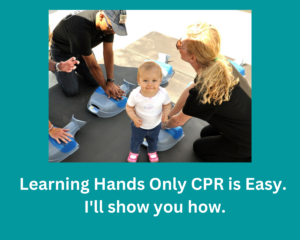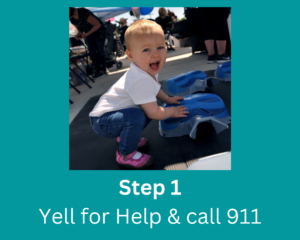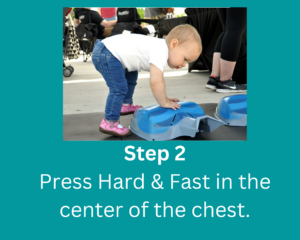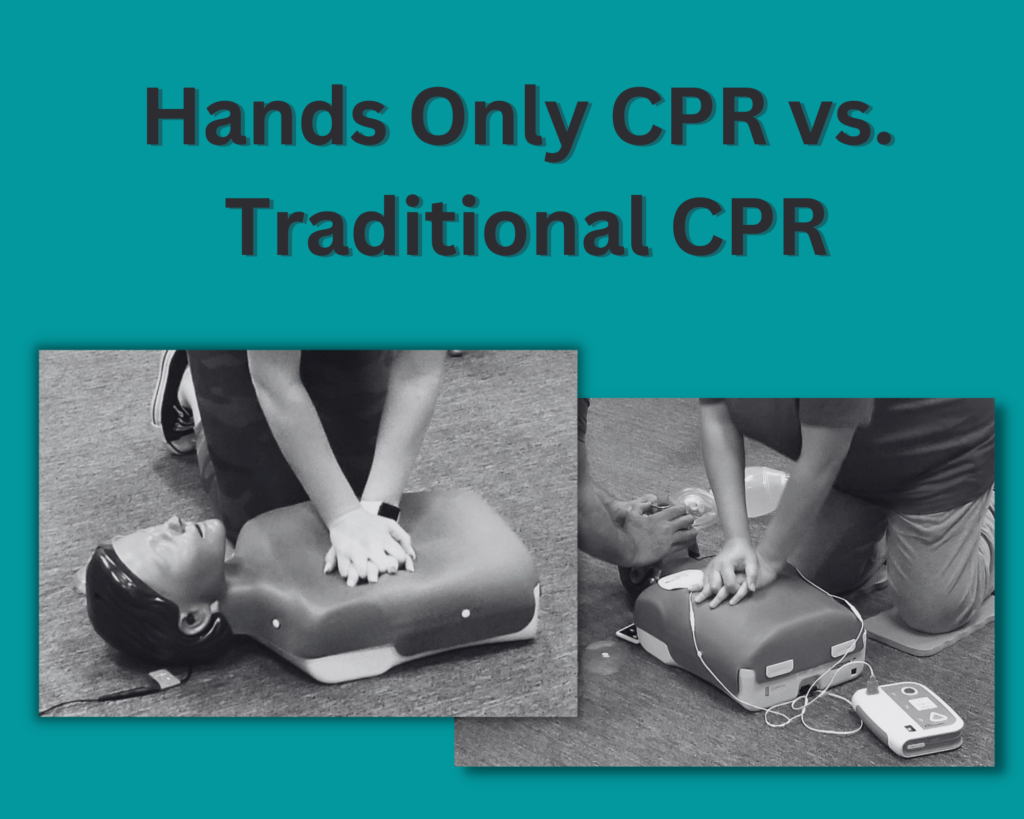In this blog we will take a look at Hands Only CPR versus Traditional CPR.
With an increased need for bystander CPR there has been a lot of education surrounding Hands Only CPR. Unfortunately, this has created a little confusion with the recommendations for traditional CPR.
So what is Hands Only CPR? How is it different? Is it better than traditional CPR? Are breaths even helpful? Well lets take a look.
AHA reports that only about 40% of people needing CPR receive bystander help before professional help arrives.
Hands Only CPR vs. Traditional CPR
Hands Only CPR = DOING COMPRESSIONS ONLY
No breaths are given and the focus is providing compressions only.
Traditional CPR = COMPRESSIONS + BREATHS
A rescuer would provide compressions and breaths at a recommended compression to breath ratio.
Every 1 minute without CPR, a persons chance of survival decreases by 7-10%.
So which is better???
The honest answer is this…..It really depends.
It depends on WHY the person went into cardiac arrest and HOW LONG it takes professional help to arrive.
In order to understand this a little better lets look at the role of oxygen and the different types of cardiac arrest and then we will summarize.
Importance/Role of Oxygen
The organs in your body need oxygen to survive.
Oxygen is transported through the body attached to blood.
Oxygenated blood is being pumped through the body by the beating of the heart.
Therefore, when the heart stops, and can no longer pump oxygenated blood to the organs, organs begin to die. This makes it vital for us to help circulate oxygenated blood until hopefully the heart can restart on its own. We do this by providing compressions.
So….when doing compressions the ultimate goal is to pump or circulate oxygenated blood to reduce how much tissue death occurs to the organs. The 2 main organs we are focused on are the heart & brain.
the 2 Types of Cardiac Arrest
Cardiac Arrest – means that the heart has stopped beating.
Type 1: Cardiac – A person’s heart just stops beating. They will be breathing up to the point that their heart stops.
These individuals can have a number of things wrong with them. They may be sick for a long time, or healthy, and their heart just stops pumping blood. When this happens the brain no longer gets oxygen and the person passes out . Don’t confuse this with fainting. A person in cardiac arrest will no longer be breathing, will not be able to move, make sound, blink, open eyes, or otherwise respond.
Type 2: Respiratory – A person stops breathing or is unable to breathe for some reason causing their heart to stop.
When a person stops breathing, they can no longer take in oxygen. When the oxygen in the blood gets too low, the heart can no longer beat (pump blood). Some examples are drowning, choking, drug over dose. Children/Infants almost always go into respiratory cardiac arrest.
So going back to the original question, which is better?
when considering the role of oxygen and the type of cardiac arrest it can be argued…
Cardiac, Cardiac Arrest =
The person was breathing right before their heart stopped, so they will have quite a bit of oxygen remaining in their blood. Therefore, in the first few minutes of cardiac arrest Hands Only CPR would be better so compressions are not interrupted.
However, this oxygen will not remain long. If an AED, or professional help does not arrive, in about 5-7 minutes then the amount of oxygen still remaining in the blood stream has decreased significantly. This person will now benefit most from switching to compressions + breaths.
You can still help this person with Hands Only CPR. They will still have a chance of surviving. They will just have a better chance of surviving if at some point someone begins delivering breaths (if they are willing and able).
Respiratory, Cardiac Arrest =
The person stopped breathing and a lack of oxygen stopped their heart. So they have little to no oxygen remaining in their blood. Therefore, this person can benefit most from compressions + breaths from the beginning.
You can still help this person with Hands Only CPR. They will still have a chance of surviving. They will just have a better chance of surviving if we start with compressions + breaths (if they are willing and able).
If CPR is started immediately
a persons chance of survival
can double or even triple.
Questions about Breaths
I thought we exhaled carbon dioxide, not oxygen? so are Breaths really still helpful?
YES! Your breaths are helpful.
When you exhale, you actually exhale 17-18% oxygen. The air you breathe (room air) contains 21% oxygen. This is extremely helpful, especially in a setting where you are the only oxygen source.
In the medical setting we use a LOT of added oxygen (90% or more) when giving breaths.
If I’m cpr certfied, Do I have to give mouth to mouth breaths?
You are not required or mandated to give a person MOUTH to MOUTH breaths just because you have training or are CPR certified. Even if you are a healthcare provider.
With training, we hope you will gain knowledge and confidence, to give breaths when a barrier device is present, or mouth to mouth if you are willing. Keep in mind the statistics show that about 70% of cardiac arrests (outside the hospital) happen inside the home. So, you are most likely going to be doing this on someone you know or love.
Again, for health care providers…..you do not have to give MOUTH to MOUTH breaths to a stranger. You have the option to do Hands Only CPR, in the community setting, when are NOT working. ***Of course, you have to give breaths, when working, and have access to barrier devices.
the act of compressions actually pulls in air into the lungs and provides oxygen, right?
NO.
Let me see if I can explain why in hopes of clearing up some confusion.
1) When we give breaths we have to open the airway by tilting the head back (chin tilt) so we can get air into the lungs.
2) For oxygenation of the blood stream to occur, the breath we give has to get pretty deep into the lungs (for my medical providers…remember the alveoli). Therefore, even the idea of holding a person head back in a chin tilting position, while someone is giving compressions, will not work.
We are just not able to generate enough pressure change in the lungs, with compressions alone, to pull air deep enough so oxygen can be transferred into to the blood. It requires some sort of added pressure or forced ventilation to push the oxygen in deep enough.
Yes, when you are performing compressions you may be able to move a tiny bit of air in the upper airway (nose/throat) but again, it requires added pressure (forced ventilation) for oxygen to get deep enough into the lungs where it can enter into the blood stream.
4 out of 5 out of hospital cardiac arrests happen at home. Therefore, you are more likely to do this on someone you know/love than a stranger.
What is taught differently???
Traditional CPR = Compressions + breaths
Led by an instructor who teaches what steps to take to help someone in cardiac arrest. A person can either take this training to obtain a certification card or choose to get trained without receiving a card.
Teaches:
1) How to check for response and breathing.
3) Perform compressions and breaths at a ratio of 30 compressions to 2 breaths.
4) How to use an AED (automated external defibrillator) when it arrives.
Hands only cpr = doing compressions only
Teaches:
1) When an adult or teen suddenly collapses you call 911 and push hard and fast in the center of the chest at a rate of 100-120 beats per minute. This person will have oxygen remaining in their blood stream as they were breathing right before they “suddenly collapsed”.
2) Children/Infants – It is still recommended to give breaths, if you are willing and able, as they have most likely to have gone into cardiac arrest due to a breathing problem. This means they have very little to no oxygen remaining in their blood when their heart stopped. **if you are not willing or able to give breaths please do Hands Only CPR**
3) Other breathing problems – it is also still recommend to give breaths, if you are willing and able, to anyone who obviously collapsed due to a breathing problem, drug overdose, drowning, or choking victims. This means they have very little to no oxygen remaining in their blood when their heart stopped. **if you are not willing or able to give breaths please do Hands Only CPR**
Helpful AHA links:
In the US more than 350,000 cardiac arrests happen outside of the hospital setting,
every year.
Common questions about CPR
Do I have to have a certification card to perform CPR?
NO!
This is one of the reasons that Hands Only CPR is taught. It gives bystanders something they can do to help without having had formal training.
Do I have to check a pulse?
Healthcare Providers – YES, in more advanced CPR courses for health care providers we do teach pulse checks.
If you want more information on pulse checks and those recommendations please read our earlier blog Pulse Checks with CPR.
Should I still take a course if I can just do hands only cpr?
Absolutely!
Taking a class has several advantages. The biggest is the ability to practice these life-saving skills on a manikin with an experienced trainer guiding you.
You know what I hear most often from people who are taking the class for the first time???? Wow, that was way different then I thought it would be.
If 70% of cardiac arrest happen at home…..then I want you to be at your best if you have to use these skills on someone you know or love.
If a situation arises, and you do not have the training or confidence to give
breaths........PLEASE do
Hands Only CPR. IT SAVES LIVES!



Hope you enjoyed the post.
Please leave a comment below and click the link to learn about taking a course with
CPR Done Right.

